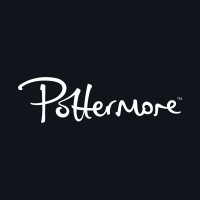1. Louise Brooks
Instantly recognisable to audiences of the time for her Tina Goldstein-esque bobbed hair (which later inspired Liza Minelli’s ’do in Cabaret), actress Louise Brooks came to symbolise the 1920s flapper girl – a slang term for fashion-conscious young women.
2. Josephine Baker
American-born Josephine Baker travelled to Paris at the age of 19 and became an overnight sensation in 1925, appearing in nothing but a feather skirt for the La Revue Nègre. A flamboyant dancer, actress and singer, she was also the first black woman to star in a major film.
3. Ernest Hemingway
Ernest Hemingway’s sparse writing style, seen in novels such as The Sun Also Rises (1926) and A Farewell to Arms (1929), was a result of his journalistic training. He had such an impact on American writing that he later won the Nobel Prize for Literature.
4. Charlie Chaplin
Charlie Chaplin was one of the biggest stars of the silent-film industry and his bumbling on-screen persona ‘The Tramp’, complete with bowler hat, moustache and cane, remains iconic today.
5. Zelda Fitzgerald
The wife of Great Gatsby author F Scott Fitzgerald, Zelda was a writer, dancer and socialite who became her husband’s muse – he based many of his characters on her, and called her ‘the first American flapper’.
6. Sigmund Freud
Although Sigmund Freud had been working in psychoanalysis for a number of years, it was in the 1920s that his work began to attract international attention. He published some of his theories of sexuality in this time, including The Ego and the Id (1923) and his development of the Oedipus complex theory.
7. Coco Chanel
The designer Coco Chanel’s contributions to fashion are numerous and legendary. Chanel No 5 – arguably the most famous perfume in history – and the little black dress, described by Vogue as ‘the frock that all the world will wear’, are just a couple of the enduring products she created in the 1920s.
8. Raymond Hood
You may not know architect Raymond Hood’s name, but chances are you’d recognise his buildings. His landmark Art Deco skyscrapers, such as 1924’s American Radiator Building and 1929’s New York Daily News Building, continue to dominate the skyline of America’s cities.
9. Clara Bow
Silent film actress Clara Bow was one of the few to successfully transition to ‘talkies' in the 1920s. Her appearance in the 1927 film It bought her worldwide fame – she was literally the original ‘It Girl' – and she came to personify the Roaring Twenties.
10. George Gershwin
The 1920s saw George Gershwin establish himself as one of musical theatre’s most successful composers. His Broadway shows include Funny Face, Show Girl and Porgy and Bess, and some of his best-known songs – Embraceable You, Summertime and Nice Work If You Can Get It – became embedded in popular culture.
11. Georgia O’Keeffe
American artist Georgia O’Keeffe rose to prominence in the 1920s with her Impressionist paintings of close-up flowers and Manhattan skyscrapers. She was a pioneer of American modernism and her works, in particular her images of New Mexico’s landscapes, remain instantly recognisable.
12. Walt Disney
Walt Disney moved to Hollywood in 1923. In 1928, he created his first major character – Mickey Mouse – providing the voice for his creation in the early years. Mickey’s popularity fuelled Disney’s success, and as his studio grew he adopted such developments as synchronised sound and Technicolor.
13. Bessie Smith
American singer Bessie Smith was known as the Empress of the Blues. She was one of the most popular female blues singers of the 1920s and 1930s, and became synonymous with the Jazz Age.
14. Babe Ruth
George Herman ‘Babe’ Ruth was an American Major League Baseball player. In the 1920s he joined the New York Yankees, helping them win their first World Series. He is considered by many to be the greatest baseball player of all time.
15. Helena Rubinstein
Helena Rubinstein was an entrepreneur who became an icon of the beauty industry. Having moved to Australia from her native Poland at the age of 22, her determination to find the perfect face cream led to a chain of beauty salons across Europe and America. By the end of the 1920s, she was one of the richest businesswomen in the world.
16. Rudolph Valentino
Italian-American actor Rudolph Valentino was one of the movie industry’s first sex symbols, starring in a number of successful silent films. His death at the age of 31 happened in New York in 1926 (there were no fantastic beasts involved…) and caused mass hysteria.
17. Salvador Dalí
The 1920s saw Spanish painter Salvador Dalí develop the surrealist style with which he later became synonymous: his dreamlike, hallucinatory paintings of melting clocks and distorted faces.
18. Greta Garbo
Swedish actress Greta Garbo was one of the most famous silent-movie actresses of her generation and a style icon to boot, helping to popularise a more masculine style of dressing.
19. Alexander Fleming
Scottish scientist Alexander Fleming’s discovery of penicillin in 1928 revolutionised medicine – and it happened almost by accident, when he realised that some of his samples had been contaminated by Penicillium notatum, preventing their growth.
20. Dorothy Parker
Writer and satirist Dorothy Parker was known for her razor-sharp wit. Her first volume of poetry, Enough Rope, was published in 1926 and she remains immensely quotable today: ‘Don’t look at me in that tone of voice’ is just one of her famous phrases.
In celebration of Fantastic Beasts, Pottermore will be delving into the history of the 1920s each week. Stay tuned for more!


